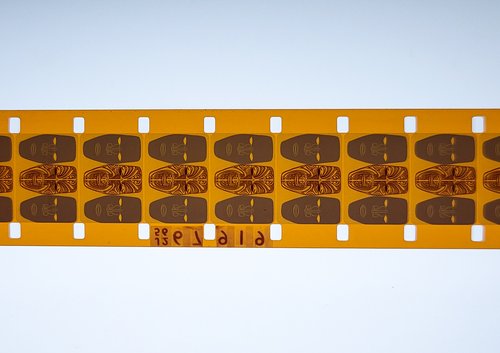
Hero image: original Tangata Whenua footage on the workbench. Troy Coutts / Ngā Taonga Sound & Vision.
Over the past two years, Ngā Taonga has taken on the privilege (and responsibility) of bringing the documentary series Tangata Whenua out of the archive and back into the public eye. As of July 11, 2023, anyone in Aotearoa New Zealand can watch Tangata Whenua on TVNZ+ in 4K resolution.
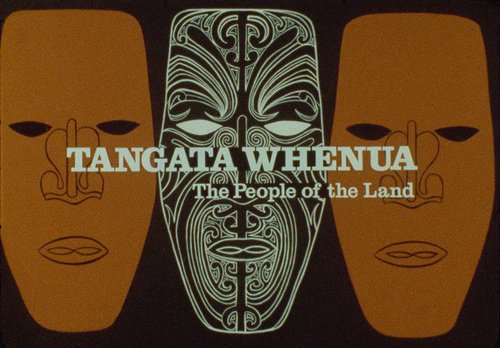
Frame enlargement of the opening sequence of an episode of Tangata Whenua (1974)
Tangata Whenua (The People of the Land) was directed by pioneer Māori film maker Barry Barclay and produced by John O'Shea of Pacific Films, while well-known historian Michael King was narrator and interviewer. King worked in collaboration with local people who helped facilitate and conduct interviews with kaumātua and others.
The series aired over six weeks in 1974 to great acclaim. At the time, it was praised for having "done more towards helping the European understand the Māori people, their traditions and way of life, than anything else previously shown on television." As our Pou Ārahi Paul Meredith put it: "It’s iconic compared to what came before, and it ended the lack of visibility of Māori on primetime television." Over the decades, the reputation of the series has only grown.
However, since its first triumphant screening on primetime television 49 years ago, public access to Tangata Whenua has been quite limited. The completed episodes, raw footage, production documentation and open reel audio tapes (ORTs) were placed into non-archival storage, where they remained until 1991. That year, all items related to the production were deposited with the New Zealand Film Archive, which much later became part of Ngā Taonga Sound & Vision.
Ngā Taonga had been trying to secure funding for preservation since the 1990s, wanting to improve public access to the series, with the consent of copyright holders and kaitiaki. Finally, with funding from Manatū Taonga Ministry for Culture and Heritage’s Te Awe Kōtuku programme , the Archive was able to begin work on this important preservation project in 2021. That year, we started the painstaking process of film and audio preservation . A team of experts would create high resolution copies of the finished episodes and raw footage, while undoing any deterioration and restoring the visual and audio tracks to their original quality. Below, we look at a few of the steps involved.
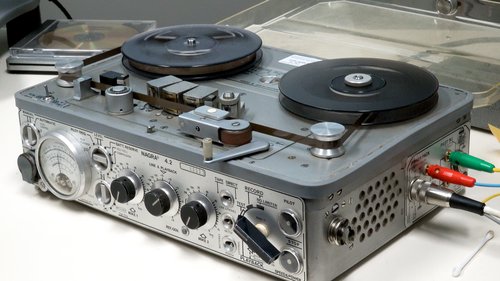
The modified Nagra open reel tape recorder used by our audio preservationists
Visual track
The series was shot on 16mm film, and to digitise it we utilised a number of new resources, including our recently upgraded ARRI scanner and HS-ART’s DIAMANT archival restoration software. Thanks to the trove of material deposited by Pacific Films, preservationists were able to go back to the master or camera negatives, and prep, scan, colour grade and perform quality control from the original source.
With preservation, the goal is not to make it perfect or better than it was upon release, but to return it to the filmmakers’ original vision. Small flaws that were present in the original are deliberately not fixed, and nothing new is added. Cutting edge digital technology even allowed the team to examine the surface of the film stock, helping distinguish quirks that have always been there from later damage or deterioration.
Dr Leslie Lewis, our Manager Film Preservation - Poutaki Rokiroki Kiriata explains:
“We're not correcting everything to make it look beautiful and pristine. The goal, as always, is to make the film look like it did when it left the lab. We found the earliest generation prints we could find, and then compared them against scans to make sure we weren't removing dirt or dust or hairs in the gate that were there when it was originally released. Some of those are things we could have cleaned up. That's not what we did.”
15 boxes of production documentation guided the process of reconstructing the camera rolls as they were shot on the day, then perfectly syncing them with the original sound recordings, which were made on a separate machine (see below for more information about the audio). Barry Barclay’s process was quite unique, and deciphering his innovative techniques for filming participants was greatly aided by having access to the production documentation.
In addition to the six aired episodes, Ngā Taonga also holds many hours of raw footage and audio that was never used. This material has also been scanned and will be returned in digital form directly to iwi.
“The best part of film preservation is showing it to people who have a personal connection to the images on screen,” says Lewis. “Especially when those people have only seen low-quality copies. In 4K, they can see everything, even the wrinkles on people’s faces, and it’s a completely different experience.”
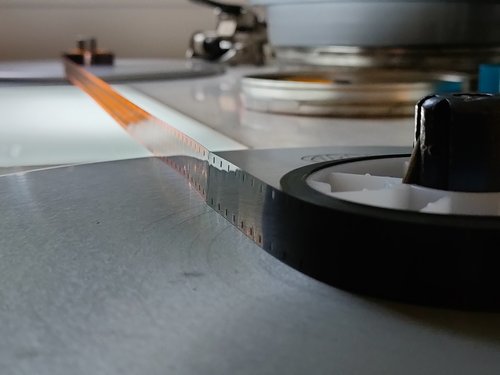
A reel of film from Tangata Whenua on the preservation workbench
Audio track
Alongside the camera rolls and documentation deposited at the Archive were 265 open reel tapes (ORTs) containing all the audio recordings that fit with the films. After decades in storage, including time in private storage, a lot of the materials were showing signs of age.
Out of the 265 audio tapes that were recorded during production, 100 were found to need conservation work due to issues like dust, dirt, or mould. Conservationists carefully cleaned any tapes that needed it, then commenced a two-part process of first restoring the episode audio, then re-syncing the many hours of raw audio with the corresponding raw film footage.
One reason there are so many ORTs (as well as many hours of film) is because of some unusual filming practices, which generated a lot of raw recordings that were edited down. The Tangata Whenua audio was recorded separately to the visuals, by a technician operating a portable Nagra open reel tape recorder that was either shoulder mounted or placed on the ground. Director Barry Barclay and crew put the interviewees at ease by positioning the camera far back from where they sat, so they could forget about it. You can see the physical distance between the sound and camera operators in the photo below.
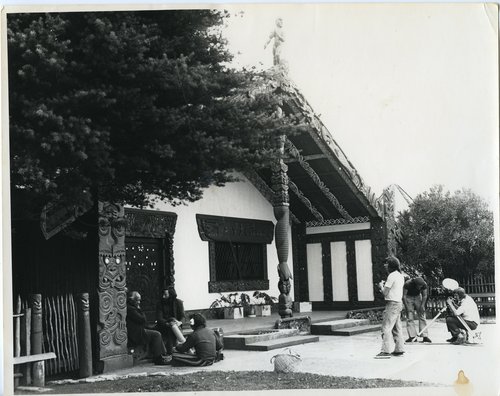
Piri Poutapu speaks with Dr Michael King
On the porch of Mahinaarangi, Tūrangawaewae Marae, Ngāruawahia. Pacific Films Collection, Ngā Taonga Sound & Vision. Courtesy of Aotearoa New Zealand Film Heritage Trust Te Puna Ataata.
Barclay also avoided any distracting practices like starting shots with a clapper board, maintaining sync with just an end slate and a clever analogue technology called a Pilottone – a 50 hertz signal sent by the camera to the tape recorder that is not audible on replay.
Each resulting episode was like a multimedia jigsaw puzzle, one carefully assembled so the joints were hidden. Impressive technical expertise was required to separately piece together the raw recordings, using a combination of the original tapes and, where these were not useable, second and third generation copies. Senior Preservation Archivist - Kairokiroki Taonga Matua Tom Ackroyd explains some of the intricacies of reuniting sound and vision after 50 years in this video:
After hundreds of hours of painstaking work, and a lot of experimentation and quality checking, the soundtrack has been returned to its original clarity. The technical skill of the 1970s Tangata Whenua crew is evident when you listen to both the spoken words of the people on screen, and the more subtle atmosphere that creates an auditory sense of place.
“When you hear these voices from so long ago it’s like they were recorded yesterday – the quality of sound is good and their voices ring loud and true,” says Tom.
Ngā Taonga is grateful to TVNZ, and all the kaitiaki who engaged with us on this long-awaited project. Ka nui rā te mihi. Watch Tangata Whenua now at https://www.tvnz.co.nz/shows/tangata-whenua .